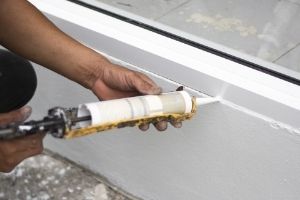Water, water, everywhere! Whether during a storm, flood, or simply through seepage from the soil, water constantly tries to find a way into your home. Obviously, you need to keep it out—otherwise, it can wreak havoc in more ways than one. Get ready to stop it in its watery tracks! Here’s how to stop water from getting into your house.
Take It From the Top
Your roof faces the weather and sun every single day of the year, so it’s worth taking the time to have it inspected for holes, loose tiles and shingles, and faulty flashing along the seams. You may notice drips and stains on the ceilings and walls that indicate the issues above. Otherwise, periodic inspections are a good idea, especially after the winter snows have melted. In fact, sometimes snow and ice can loosen up shingles and tiles, particularly around ice dams. Make a point of keeping your gutters clean and clear of leaves, twigs, and other debris, and be sure downspouts keep water away from the perimeter.
Seal It Up
Your home may seem solid and impenetrable, but there are dozens of points where water—not to mention cold drafts, pests, and more—can enter. Walk around the house, inside and out, looking (and sometimes feeling) for holes, cracks, and other openings. Windows are particularly troublesome spots, so check the spaces between the windows and walls. The caulk may be worn out and crumbling away—clean it out and apply a new layer. Check for spaces around pipes, wires, and the like entering your home and seal those as well.
Perimeter Check
During your inspection, check the condition of the grounds and foundation line. Do you have organic debris or anything else stacked up against your home? Clear it away—otherwise, you’re giving water a place to build up and find a way in. Keep snow from building up around the foundation as well. The constant cycle of freezing and melting can allow water to force its way inside. Be sure your perimeter rises slightly and slopes away from the house, so water rolls away.
Down in the Hole
When considering how to stop water from getting into your house, pay extra attention to the basement. As basements are built below grade, your basement faces constant and literal pressure from the soil around it and the water in the soil. Check for cracks in the foundation and seal them with epoxy before painting the walls with waterproof paint. Inspect your window wells, treat the windows with caulk and putty, and keep a cover on the well itself. If your floor drain is backed up, that might be a sign of a more serious issue. Call a plumber to have it inspected and routed and be sure it’s kept clear of detritus.
A Complete Guide To Basement Waterproofing


